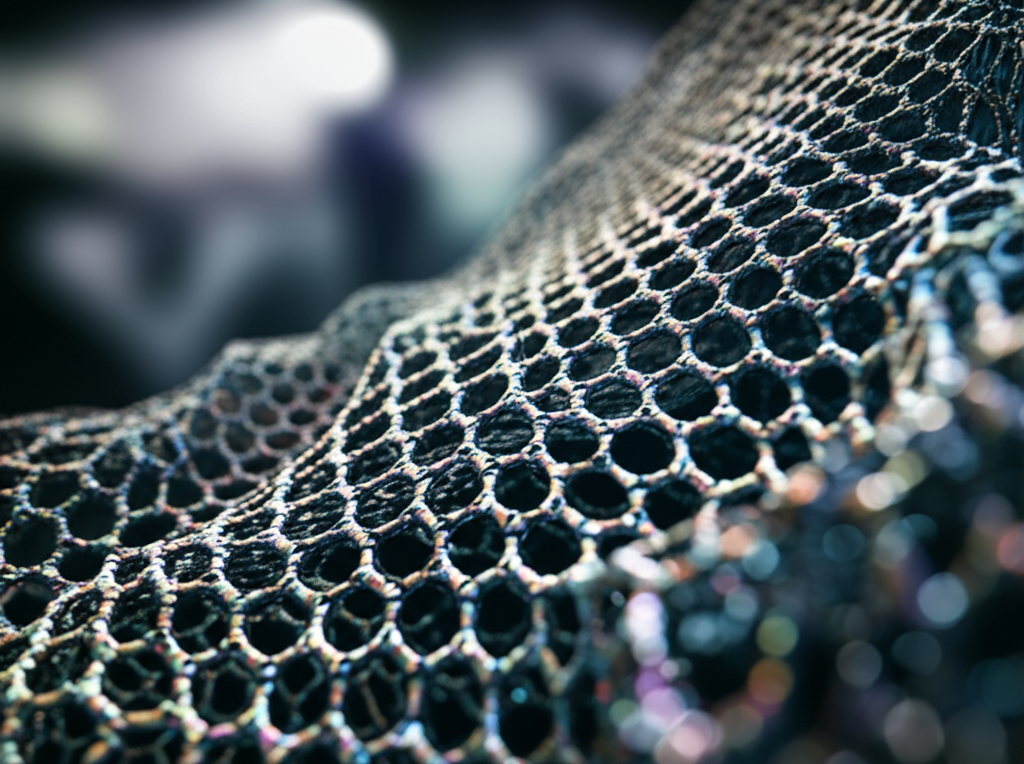Imagine a material ten times stronger than steel, yet lighter than aluminum and potentially cheaper to produce. Sounds like science fiction, right? Enter graphene, a two-dimensional form of carbon, and its exciting three-dimensional configurations. Researchers at MIT have unlocked the potential of this "green" material, creating a sponge-like structure with astonishing strength. But what exactly is graphene, and how can it revolutionize industries from construction to aerospace? Let's dive in.
What Exactly is Graphene and Why is it So Strong?
Graphene is a single layer of carbon atoms arranged in a hexagonal lattice. Think of it as a sheet of chicken wire, but made of carbon at the atomic level. In its two-dimensional form, it's considered the strongest material known to science.
Why is 2D Graphene So Strong, But Difficult to Use?
The strength of graphene comes from the strong covalent bonds between carbon atoms. However, its two-dimensional nature makes it difficult to translate this strength into useful three-dimensional materials. Imagine trying to build a skyscraper out of single sheets of paper – they're strong individually, but crumble easily when stacked.
How Did MIT Scientists Create a 3D Graphene Structure Stronger Than Steel?
The MIT team discovered that the geometry of the graphene structure is key. By compressing and fusing flakes of graphene using heat and pressure, they created a sponge-like configuration with a density of only 5%. This configuration mimics the shapes of corals and microscopic creatures called diatoms, maximizing surface area in relation to volume.
What is the Secret to the Geometric Configuration?
The key lies in the curved surfaces and porous nature of the 3D graphene structure. Similar to how rolling a sheet of paper into a tube dramatically increases its strength, the geometric arrangement of graphene flakes creates a remarkably strong configuration. These shapes are known as gyroids, which are extremely complex and difficult to manufacture using traditional methods.
How Was the 3D Graphene Structure Tested?
The team used a high-resolution, multimaterial 3D printer to create enlarged models of the graphene structure for testing. They subjected these models to tensile and compressive tests, simulating real-world loading conditions. The results from these experiments closely matched the predictions of their theoretical models, confirming the exceptional strength of the material.
What Are the Potential Applications of 3D Graphene?
The potential applications of this strong, lightweight material are vast and span numerous industries:
- Construction: Imagine concrete structures, like bridges, built with this porous graphene geometry. They would offer comparable strength with a fraction of the weight, and also provide excellent insulation due to the enclosed airspace.
- Aerospace: Lighter and stronger aircraft components could lead to significant fuel savings and improved performance.
- Filtration: The tiny pore spaces within the graphene structure could be used in water or chemical processing filtration systems.
- Automotive: Lighter car bodies improve fuel efficiency and potentially increase safety.
- Protective Gear: Strong yet lightweight body armor for military and law enforcement personnel.
Can We Replace Helium in Balloons with 3D Graphene?
While initial speculation suggested the possibility of creating 3D graphene structures lighter than air, the MIT team's research indicates that at such low densities, the material would lack sufficient strength and collapse under air pressure. So, sadly, graphene balloons are unlikely.
Can Other Materials Be Used to Create Similar Structures?
Absolutely! The beauty of this discovery is that the geometry is the dominant factor. According to Professor Buehler, "You can replace the material itself with anything... It’s something that has the potential to transfer to many things." This means that polymers, metals, or other materials can be used to create similar strong, lightweight structures, potentially offering advantages in cost, processing methods, or other material properties like transparency or electrical conductivity.
How is 3D Graphene Considered a "Green" Material?
The "green" aspect comes from several factors:
- Material Efficiency: Using minimal material to achieve maximum strength reduces resource consumption.
- Potential for Recycled Materials: The possibility of using polymers or other recycled materials in the gyroid structure enhances its sustainability.
- Reduced Energy Consumption: Lighter structures in transportation and construction translate to lower energy consumption and reduced carbon emissions.
Frequently Asked Questions
Is graphene expensive to produce?
Currently, graphene production can be expensive. However, research into more efficient and scalable manufacturing methods is ongoing, with the potential to significantly reduce costs in the future. Furthermore, the ability to use alternative, cheaper materials within the discovered geometry makes it a cost-effective alternative.
Is graphene safe to handle?
Graphene, in its raw powder form, may pose some respiratory risks if inhaled. However, when incorporated into a stable 3D structure, these risks are significantly reduced. Further research is needed to fully understand the long-term health effects of graphene exposure.
When will we see graphene used in everyday products?
While widespread adoption is still some years away, graphene is already being used in some niche applications, such as high-performance sports equipment and advanced electronics. As production costs decrease and manufacturing techniques improve, we can expect to see graphene incorporated into a wider range of products in the coming years.
The Future is Strong (and Lightweight)
The discovery of this strong, lightweight 3D graphene structure represents a significant breakthrough in materials science. While challenges remain in scaling up production and reducing costs, the potential applications of this "green" material are truly transformative. This isn't just about stronger materials; it's about a more sustainable future.
Ready to learn more about materials science and its impact on our world? Start by researching the latest advancements in carbon nanotube technology and their potential applications.

